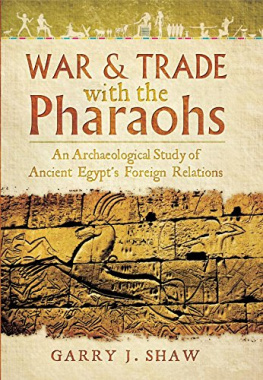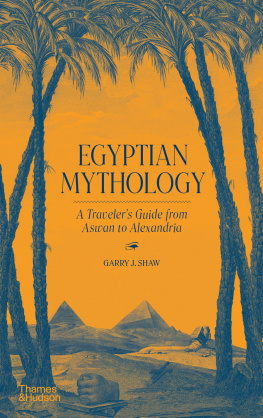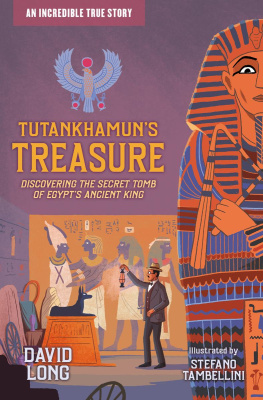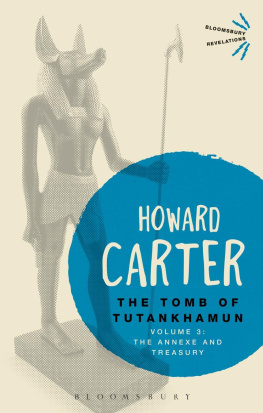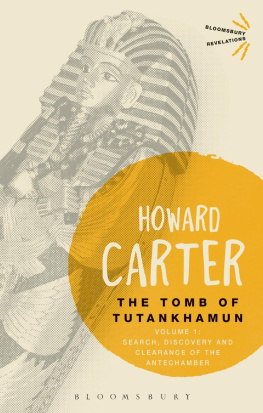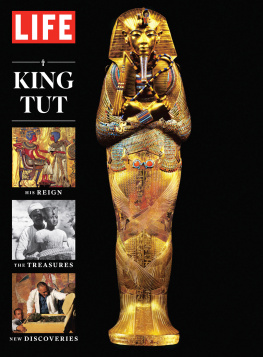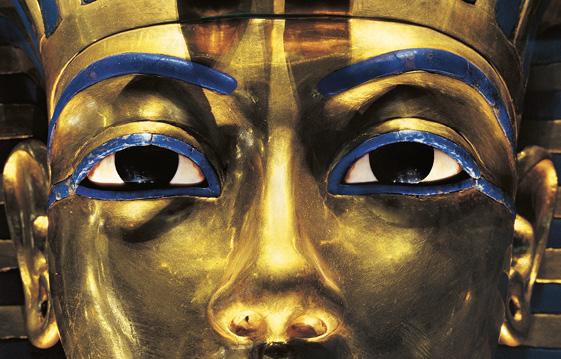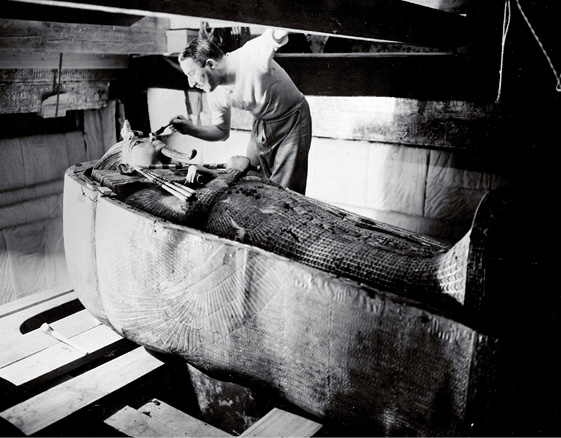Id like to thank Heather McCallum, the managing director and publisher at Yale University Press London, for inviting me to write this book. Its wonderful to have had the chance to play my own part in the centenary celebrations to delve into Tutankhamuns life and reconstruct his fascinating world. Her team at Yale University Press made this book possible, and I am grateful to all of them for their hard work and dedication. My thanks also go to the anonymous referees who suggested improvements to my initial proposal and the finished manuscript; to the books amazing copyeditor Eve Leckey; to Heather Nathan and Kate Burvill for marketing and publicity; to Ken Griffin for his valuable help; and to my wife Julie Patenaude for reading and commenting on the evolving drafts of the manuscript.
Introduction
. The eyes of Tutankhamuns gold mask.
Tutankhamun. Unlike the names of many kings from the ancient world, Tutankhamuns has entered the public consciousness. People everywhere know the story of the discovery of his tomb; everyone has heard of the curse; everyone recognizes his famous gold mask.
But this should never have been the case.
Over three thousand years ago, the ancient Egyptians hacked out Tutankhamuns name from his monuments in a deliberate attempt to obliterate him from memory; his carvings and images were usurped by later kings, and he died young, before he could make a name for himself in Egypt and abroad. If things had gone according to plan, Tutankhamun wouldnt even be a footnote in history.
It is only the chance survival of his tomb, and especially the treasures within, that have brought the boy king to our modern day and made him a celebrity. But theres much more to Tutankhamun than just his treasures. Pieced together from clues left on his dazzling artefacts and other scattered monuments unearthed over the past century, his story is one of a short life, lived in interesting times.
The Boy King
Tutankhamun was born around 1329 BC , over a thousand years after sweating Egyptian workers heaved the Great Pyramid of Gizas last blocks into place, and about one thousand years before Cleopatra met her asp-poisoned fate locked in her Alexandrian tomb. He grew up during a tumultuous era, when his father, King Akhenaten, had moved the royal court to a newly constructed city in the desert modern Tell el-Amarna, ancient Akhetaten. With the famous Queen Nefertiti, this heretic king swept aside the old gods, attacked their images and names, and focused state worship on a single deity: the Aten, or sun disc. Later, when Tutankhamun came to power at the age of ten, his first job was to dismantle his fathers movement and spearhead the return to Egypts traditions. Urged on by his advisers, but acting in his own name, he restored and reopened ruined temples and re-carved smashed divine statues. As the years passed, Tutankhamun managed to re-establish order, a key traditional role of any Egyptian king, but this meant going against the life work and teachings of his immediate family. It cant have been easy, and ultimately, he wouldnt even be recognized for his achievements.
After his early death, Tutankhamuns dynasty crumbled. His successors attacked his name and monuments, usurped his legacy, and a new royal line came to power. His tomb, hidden by flash flood debris soon after his burial, was quickly forgotten, and life continued as if the boy king had never existed. Little thought was given to him again until the first decade of the twentieth century, three thousand years later, when Egyptologists excavating in the Valley of the Kings unearthed a pit and a small chamber, each containing artefacts bearing Tutankhamuns name. These were thought to be all that remained of his burial he was, after all, an inconsequential king. But British archaeologist Howard Carter disagreed. Funded by Lord Carnarvon, Carters search for the tomb began in 1917 and, after years of frustration, succeeded in 1922. The wonderful things Carter discovered made headlines around the world.
. Howard Carter looks into the face of Tutankhamuns second coffin.
In an instant, Tutankhamun was back.
Since Carters day, the tombs treasures have toured the globe like rock stars, selling out exhibition halls everywhere, and each time generating a new wave of Tut-mania. Over the years, the boy king and his artefacts have inspired movies, novels, music, jewellery and architecture, while the 1920s media obsession with the tombs supposed curse never dissipated. Documentaries too, often presenting new theories and research on the boy kings family or death, remain popular. In the twenty-first century, Tutankhamuns treasures have made their new home at the Grand Egyptian Museum, Giza, his mummy has been analysed using the latest scientific techniques, and studies of his tomb have raised the possibility of secret chambers lying hidden within. The treasures themselves have still not been fully examined by scholars, leaving many more revelations to come, and artefacts associated with Tutankhamun continue to emerge during excavations across Egypt, adding new details about his life.
Over three thousand years may have passed, but the story of Tutankhamun is still being written.
Telling the Story
People today remain just as fascinated by Tutankhamun as they were when his tomb was discovered a century ago. Celebrity, royalty, riches, unexplained death, and a lost tomb, have proven to be an alluring, enduring, and intoxicating cocktail. When combined with the slow-drip reveal of fragments of information emerging from excavations or museum storerooms the pieces of a puzzle, each bringing us one step closer our interest is secured until the next revelation. And then the next. The developing story is a historical drama, police procedural, and soap opera rolled into one. Theres always just enough new evidence to slightly clarify our understanding, but not enough to answer everything. Its frustrating in a good way.
The arrival of the one-hundredth anniversary of his tombs discovery presents the perfect opportunity to see what the accumulated mass of a centurys evidence, interpretation, speculation, and argumentation has truly revealed about Tutankhamuns life and death. To build my reconstruction, Ive studied the latest scholarship and prised out as much historical detail as possible from the limited surviving information. Where Ive chosen one interpretation over others, to maintain the narrative flow I explain my reasoning and potential alternatives in an endnote, and to keep a good pace, I only cover a period of about forty years in the fourteenth century BC , encompassing the time just before Tutankhamun, his reign, and the aftermath, before jumping forward in time to the twentieth and twenty-first centuries.
Objects from Tutankhamuns tomb, or those associated with him, illustrate events from his life, not just his death. A reed cut with his own hands from the marshes to help him walk. The wear on his sandals. Repairs to his chariot wheels. A lock of his grandmothers hair. These are not the tombs flashiest crowd-pleasers, but these small details, and others like them, can help to add flesh to the bones of Tutankhamuns life, transforming him from a symbol of ancient Egypt into a human being. The artefacts also provide intriguing details about ancient Egyptian culture, such as kingship, court life, religious beliefs, and the afterlife, and let us explore Egypts wider international affairs. In this way, Tutankhamuns tomb is a time capsule, providing a snapshot of life in 1300 BC not just in Egypt, but across the Egyptians known world.


